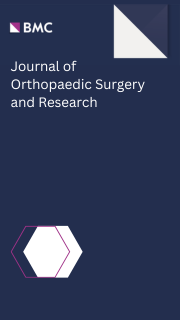
Assessment of 2-year outcome between calcium phosphate-hybridized vs untreated STG autograft in ACLR

Assessment of 2-year outcome between calcium phosphate-hybridized vs untreated STG autograft in ACLR
Anatomic single-bundle anterior cruciate ligament reconstruction using a calcium phosphate-hybridized tendon graft: a randomized controlled trial with 2 years of follow-up
J Orthop Surg Res. 2018 Dec 29;13(1):327. doi: 10.1186/s13018-018-1045-1Did you know you're eligible to earn 0.5 CME credits for reading this report? Click Here
Synopsis
90 patients scheduled for anterior cruciate ligament reconstruction with a hamstring autograft were randomized to either have the ends of the graft treated with calcium chloride and sodium phosphate solutions for calcium phosphate hybridization (CaP group), or to no treatment of the graft. Patients were assessed on CT scans for increase in cross-sectional area of the femoral and tibial bone tunnel...
To view the full content, login to your account,
or start your 30-day FREE Trial today.
FREE TRIAL
LOGIN
Forgot Password?
Explore some of our unlocked ACE Reports below!

Learn about our AI Driven
High Impact Search Feature
Our AI driven High Impact metric calculates the impact an article will have by considering both the publishing journal and the content of the article itself. Built using the latest advances in natural language processing, OE High Impact predicts an article’s future number of citations better than impact factor alone.
Continue



 LOGIN
LOGIN

Join the Conversation
Please Login or Join to leave comments.